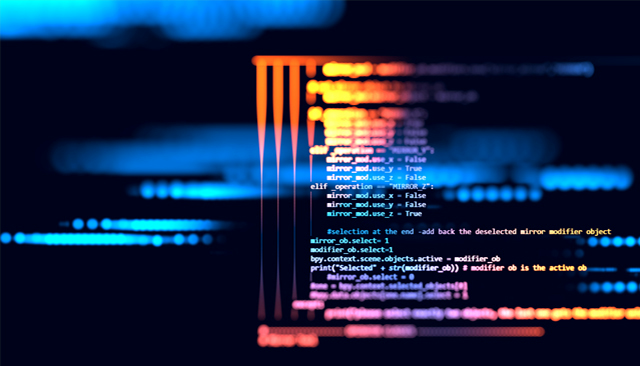What is meant by static analysis?
Static analysis, also referred to as static code analysis, is a method of computer program debugging conducted by examining the code without executing the program or a plug-in. This process is beneficial as it provides an understanding of the code structure and can help coders ensure that the code adheres to the set industry standards. Static analysis is also utilized in software engineering by software development and quality assurance teams. Automated tools also assist programmers and developers when they are carrying out static analysis. The software is designed to scan all code in a project and simultaneously check for vulnerabilities while it validates the code. It also aids development teams that are under pressure and need quality releases in a timely manner. To get access to quality tools, you can use your Bitbucket, GitHub, or Google account (API – application programming interface) to sign up with a provider used for ISO and IEC.
Table of Content:
- How is the static analysis done?
- Types of static analysis.
- Static code analysis tools objectives.
- Static verification vs. dynamic verification.
- Static analysis: Vendors and Tools.
Static analysis is usually helpful in finding coding issues such as:
- Programming errors / Runtime errors
- Coding standard violations
- Undefined values
- Dead or unused codes
- Performance issues
- Bug risks or anti partners
- Syntax violations
- Security vulnerabilities
The static analysis process is also beneficial when software engineers address weaknesses present in the source code/open source. These weaknesses could lead to buffer overflows – a standard software vulnerability.

How is the static analysis done?
When the static analysis process is automated, it is usually simple as compared to a manual code review. Typically, static analysis occurs before software testing in early development, and in the DevOps development practice, it will happen in the creative phases/stages.
Once the code has been written, a static code analyzer ought to run the code over. Then, it will be checked against defined coding rules from standards or a custom predefined set of rules. Once the code has been run through the static code analyzer, the analyzer then identifies whether or not the code written complies with the set rules -for instance, code style violations, security flaws, and other metrics.
Sometimes, the software can flag false positives, so someone needs to go through and dismiss any. Once false positives are waived, developers can fix any apparent mistakes, prioritizing the most critical ones. Once the code issues identified are resolved, the code can move on to testing through execution.
Without having code testing tools, the static analysis takes a lot of work since humans have to review the code. Then, figure out how it will behave in runtime environments. Thus, it’s a good idea to find a tool that automates the development process, and getting rid of any lengthy processes establishes a more efficient work environment.

Types of static analysis
There are several static analysis methods a company could use; these include:
- Control analysis: This focuses on the control flow analysis in a calling structure. For instance, a control flow could be a process, method, subroutine, or function.
- Data analysis: This ensures that defined data flow is correctly used while also making particular data objects correctly operate.
- Failure/fault analysis: This analyzes the faults and failures in model components.
- Interface analysis: This verifies simulations to check the code and ensures the interface fits into the model and simulation.
When you have less official categorization, in the broader sense, static analysis can be broken into the formal, design, and cosmetic properties, error checking, and predictive categories. Traditional meaning if the code is correct; decorative definition if the code syncs up with style standards; design properties meaning the level of complexities; predictive, which asks how code will behave when run and error checking, which looks for code violations.

Static code analysis tools objectives
Static code analysis and static analysis are usually used interchangeably with static source code analysis. These code analysis tools are trusted because they have been in use for 30 years, delivering accurate and precise results.
Pros and Cons of Static Analysis
| The advantages of using static analysis are: | But static analysis comes with some disadvantages. Organizations should stay aware of the following pitfalls: |
|
|
Static Verification vs. Dynamic Verification

Both verification types detect defects, and the difference comes in where they find defects in the software development life cycle/system development life cycles (SDLC). Static identifies the defect prior to the running of the program, between coding and unit tests. Identifying these code errors in the early stages means they are less expensive to fix. Such defects can cause false positives or false negatives. Dynamic verification, on the other hand, is used to identify defects after you have run a program. Some coding errors may not surface during the unit testing. So, there are defects that dynamic testing might miss that static code analysis can identify.
The principal benefits of static analysis are that it can reveal errors that do not manifest themselves until a disaster has occurred weeks, months, or years after applying the code. Static analysis is only a first step in a comprehensive software quality-control regime. After a static analysis has been done, dynamic analysis is often performed to uncover subtle defects or vulnerabilities. In computer terminology, static means fixed, while active means capable of action and change. Dynamic analysis or dynamic code analysis entails the continuous testing and evaluation of a program based on its execution. Glass-box testing is a term sometimes used when referring to static and dynamic analysis considered together.
With its Whitebox visibility, Static analysis is undoubtedly the more thorough approach. It may also prove more cost-efficient with the ability to detect bugs at an early phase of the software development life cycle. Static analysis can also unearth errors that would not emerge in a dynamic test. On the other hand, dynamic analysis is capable of exposing a subtle flaw or vulnerability too complicated for static analysis alone to reveal. However, a dynamic test will only find defects in the part of the code that is executed. The enterprise must weigh up these considerations with the complexities of their situation in mind. Application type, time, and company resources are primary concerns.
Static Analysis: Vendors and Tool

There are many static verification tools out there, so it can be unclear how to pick the right one for you. Software tools work at a variety of levels. For instance, unit-level tools examine programs or subroutines—technology-level tools test between unit programs and a view of the overall program. System-level tools, on the other hand, analyze the interactions between unit programs. And mission-level agencies focus on mission layer terms, rules, and processes. Before committing to a device, a company should also ensure that the tool supports the programming language they’re using to write lines of code and the standards they want to comply with. These include; Java, Javascript, Python, C, C#, and C++.
Embold is an example static analysis tool that claims to be an intelligent software analytics platform. The device can automatically prioritize issues with code and give a clear visualization of it. The agency will also verify the accuracy and correctness of the design patterns used in the code.
Examples of static analyzers are Kiuwan. This is a large platform that focuses on implementing static analysis in a DevOps environment. It features up to 4,000 updated rules based on 25 security standards, and it also integrates well with Jenkins.
PyCharm is another example tool that is built for developers who work in Python with large codebases. The device features code navigation, automatic refactoring as well as a set of other productivity automated tools.










